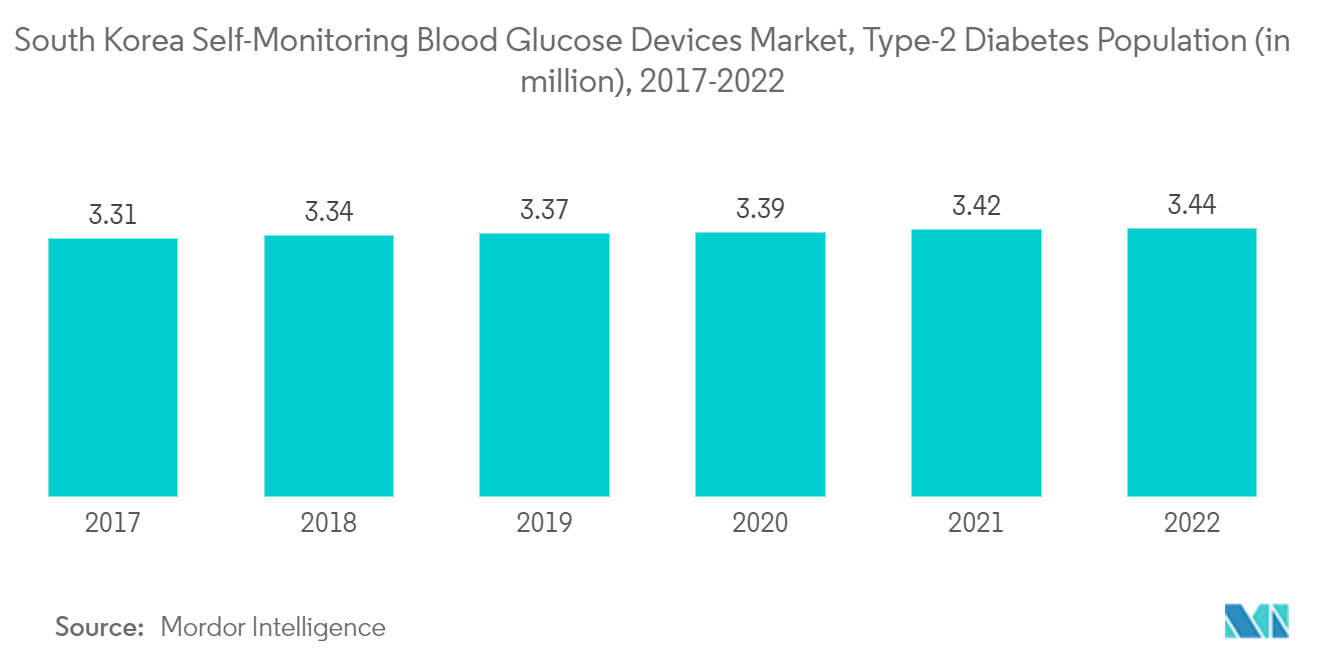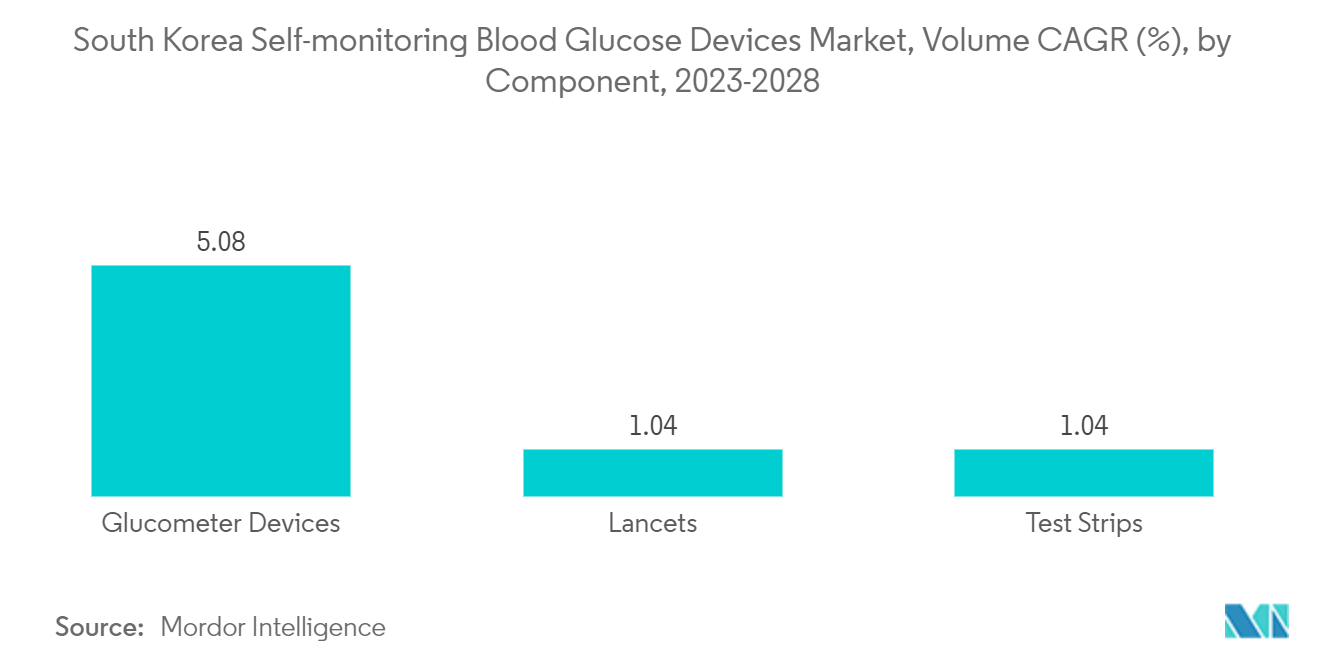Market Trends of South Korea Self-Monitoring Blood Glucose Devices Industry
Rising Diabetes Prevalence in South Korea
The diabetes population in South Korea is expected to rise by 0.57% over the forecast period.
According to the Korean Diabetes Association, among Korean individuals aged 30 years or older, the predicted prevalence of diabetes mellitus was 13.7% in 2021. When diabetes is undetected or inadequately treated, people with diabetes are at risk of serious and life-threatening complications, such as heart attack, stroke, kidney failure, blindness, and lower-limb amputation. These result in reduced quality of life, higher healthcare costs, and a greater need for access to care.
Monitoring blood glucose levels serves as a useful option for other measures of glycemia, including A1C. It is the optimal way to confirm and treat hypoglycemia. It provides feedback on the results of healthy behavior interventions and antihyperglycemic pharmacological treatments. Blood glucose monitoring provides information to both the person with diabetes and their diabetes healthcare team to facilitate longer-term treatment modifications and titrations as well as shorter-term treatment decisions, such as insulin dosing for people with type-1 or type-2 diabetes.
The Ministry of Food and Drug Safety, South Korea's medical device market regulator, plans to roll out several amendments to the country's Medical Devices Act and has also expanded its list of devices eligible for electronic indications for use. Penetration of remote patient monitoring devices in the South Korean market supports local clinical research organizations in their clinical research trials and ensures ease of monitoring, which facilitates the discovery process.
Therefore, the studied market is anticipated to witness growth over the analysis period.

The Glucometer Devices Segment is expected to witness the highest CAGR over the forecast period
The glucometers segment is expected to register the highest CAGR of about 4% in the market over the forecast period owing to the increasing adoption of glucometers in home care settings, the growing preference for home-based self-monitoring, and recent product launches of advanced glucometers.
Glucose monitoring gives people living with diabetes a more complete picture of their blood sugar levels, which can influence short- and long-term treatment decisions and improve health outcomes. It allows them and their healthcare providers to assess their glycemic status and adverse effects and to determine the effectiveness of glucose-lowering therapies. Glucose monitoring improves blood sugar management and quality of life for people living with diabetes, resulting in physical, social, emotional, and functional benefits. Self-monitoring of blood glucose is a way for people living with diabetes to measure and assess their glucose levels. It uses a drop of blood from a finger prick to get a blood glucose reading using a blood glucose meter or glucometer.
The National Health Insurance Act covers all public health insurance in Korea. This Act covers the entire population, and all citizens earning an income in Korea must contribute a percentage of their monthly salary. Employers are also responsible for matching employee contributions. There are two health insurance agencies under the MOHW: the Health Insurance Review Agency (HIRA) and the National Health Insurance Corporation (NHIC). In particular, the HIRA is responsible for reviewing reimbursement coverage or non-coverage and pricing applications from pharmaceutical and medical device companies. If reimbursement is obtained, the company may be able to expand its market and obtain a larger sales volume.
Thus, owing to the above-mentioned factors, it is expected to drive segment growth over the forecast period.


